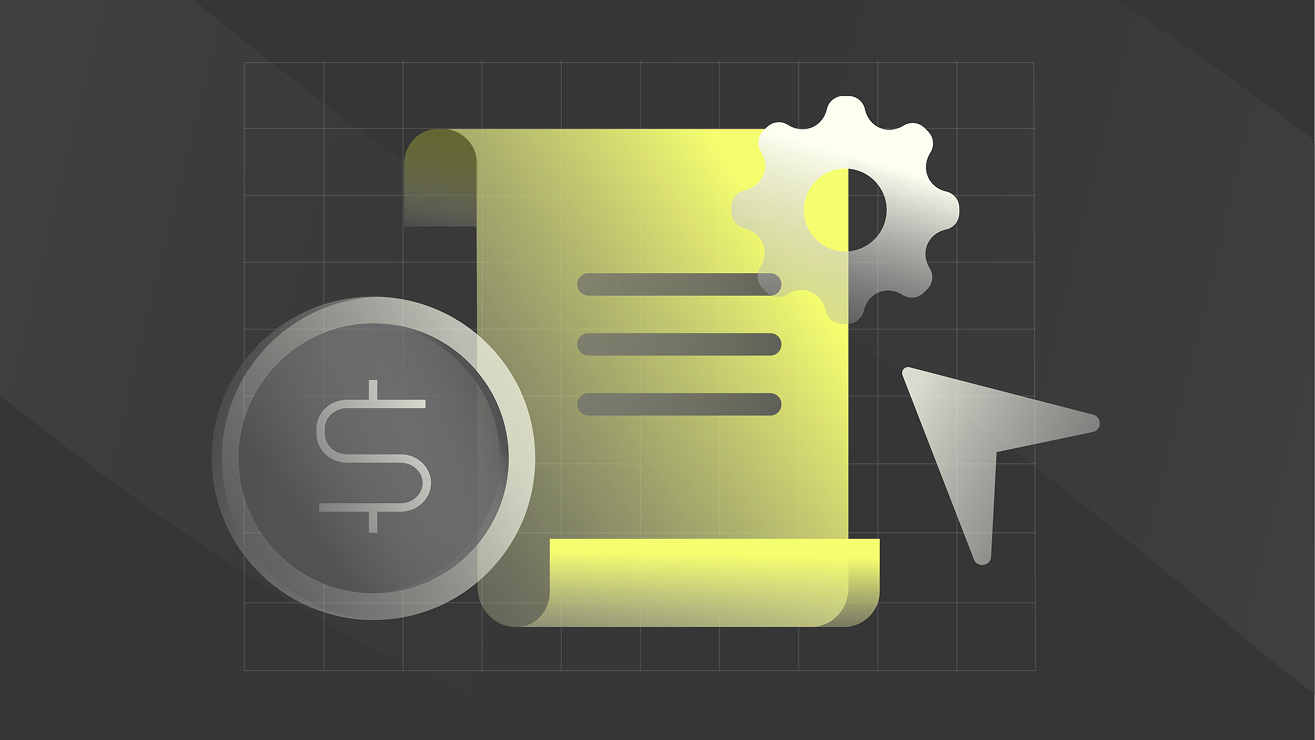
Key Takeaways
Automation can transform the notoriously slow and manual expense management process into a streamlined and efficient workflow.
- How it works: This guide explains how to automate the entire expense lifecycle, from AI-powered receipt capture and automated policy compliance checks to automated approval routing and reimbursement processing.
- The business impact: This end-to-end automation saves countless hours for both employees and the finance team.
- The key benefits: Improved compliance and real-time visibility into company spending.
The precise tracking and judicious control of employee expenditures are non-negotiable for fiscal solvency and operational integrity in the intricate domain of corporate finance. Yet, the traditional landscape of expense management, burdened by physical expense reports, paper receipts, and labyrinthine approval chains, often saps resources, invites errors, and clouds financial visibility. It is within this persistent challenge that Expense Management Automation emerges as a truly transformative force. For corporate leaders, comprehending the profound impact of this automation is indispensable for commanding robust financial oversight and propelling enterprise-wide efficiency.
This guide aims to elucidate the pivotal concept of Expense Management Automation. It will precisely delineate this transformative shift, articulate its profound importance, detail its foundational functionalities and key features, and underscore the compelling advantages gleaned from adopting such solutions. These benefits include streamlining workflows, dramatically elevating efficiency, sharply curtailing errors, significantly bolstering financial control, and proactively thwarting fraudulent activities. By sharply contrasting automated methodologies with their antiquated manual counterparts and illustrating how artificial intelligence (AI) is fundamentally redefining the entire expense management paradigm, this content offers a comprehensive synthesis. Its ultimate purpose is to serve as an indispensable resource for organizations seeking to embrace or refine Expense Management Automation, championing its role in achieving substantial time savings, amplified productivity, and resilient financial oversight.
Decoding Expense Management Automation
Expense Management Automation denotes the strategic deployment of cutting-edge technologies to streamline and ultimately eliminate manual steps throughout the entire lifecycle of submitting, verifying, approving, and reimbursing business expenditures. It fundamentally transmutes a historically cumbersome, paper-reliant process into a fluid, digital, and highly efficient workflow.
This concept extends far beyond merely digitizing a physical receipt. Expense Management Automation encompasses:
- Intelligent Receipt Capture: Employees capture receipts instantaneously via mobile devices, frequently leveraging optical character recognition (OCR) and AI to automatically extract critical data.
- Automated Categorization: Expenses are swiftly and accurately categorized (e.g., travel, client meals, entertainment) and meticulously assigned to pertinent projects or departments.
- Real-time Policy Adherence: The system instantly cross-references submitted expenses against established company policies for strict adherence, immediately flagging any potential violations. This proactive scrutiny is critical for maintaining robust policy compliance.
- Dynamic Approval Routing: Expense requests are automatically directed to the appropriate managers or finance personnel for review, significantly curtailing approval bottlenecks.
- Seamless Reimbursement Initiation: Once fully approved, the system autonomously triggers the reimbursement process, often integrating directly with payroll or banking systems.
An automated expense management solution is designed to deliver a cohesive, end-to-end digital experience, eliminating the drudgery and inherent vulnerabilities of manual processing.
Why Embrace Expense Management Automation? The Compelling Imperatives
The decision to actively automate expense management is driven by a compelling array of benefits that directly impact an organization’s financial vitality and operational agility.
- Substantial Time Reclamation: Employees dedicate notably less time to arduous expense reports, while finance teams are liberated from laborious manual data entry, reconciliation, and chasing down approvals. This frees up invaluable employee hours for strategic, higher-value activities.
- Dramatic Error Curtailment: Manual data input stands as a primary genesis of errors. Expense Management Automation profoundly minimizes these discrepancies, leading to more accurate financial records, fewer reimbursement inaccuracies, and elevated data integrity.
- Fortified Policy Adherence: An automated expense management solution possesses the capacity to enforce policy compliance in real-time, instantly flagging out-of-policy spending. This proactive vigilance curtails unauthorized expenditures and guarantees strict adherence to internal guidelines and regulatory mandates.
- Crystal-Clear Financial Visibility: Real-time insights into spending patterns, departmental outlays, and vendor costs empower finance leaders with exceptionally precise financial control. This greatly aids in meticulous budgeting, accurate forecasting, and the identification of significant cost-saving opportunities.
- Proactive Fraud Deterrence: Automation, particularly when synergistically combined with AI, can detect subtle, suspicious patterns, identify duplicate submissions, or flag unusual spending behaviors that might indicate fraudulent activity, thereby significantly bolstering security measures.
- Accelerated Reimbursement Cycles: Automating reimbursement processes means employees receive their funds with notably greater speed, culminating in elevated employee satisfaction and improved morale.
- Streamlined Audit Preparedness: With all expense data comprehensively digitized, meticulously categorized, and accurately timestamped, audits become substantially swifter and less burdensome, as all requisite information is readily accessible and verifiably accurate.
These compelling benefits unequivocally underscore why adopting an automated expense management solution is a non-negotiable strategic imperative for contemporary enterprises.
How Expense Management Works in an Automated System
The functional dynamics of Expense Management Automation transmute a typically arduous process into a fluid, highly efficient workflow. Herein lies a representative journey through an automated expense management solution:
- Expense Incurrence & Digital Capture: An employee incurs a business expenditure. They immediately capture the receipt utilizing a mobile application, which subsequently employs OCR technology to intelligently extract key data points (e.g., vendor, date, monetary amount).
- Intelligent Categorization & Pre-population: AI algorithms automatically assign expenses to appropriate categories (e.g., travel, client meals) and pre-populate relevant fields within the expense reports, thereby minimizing manual input requirements.
- Instantaneous Policy Compliance Check: As the expense is entered, the automated expense management solution instantaneously validates it against predefined company spending policies. Should an expense deviate from policy, it is flagged immediately, prompting the employee for justification or adjustment. This critically enhances policy compliance.
- Automated Approval Routing: The system autonomously routes the expense report to the designated manager or through the correct approval hierarchy. Automating approvals can be dynamically based on spending thresholds, department affiliations, or specific project codes. Automated reminders are dispatched if approval delays occur.
- Automated Reimbursement Processing: Once all requisite approvals are secured, the system automatically triggers the reimbursement procedure. This can seamlessly integrate with payroll systems for direct deposit or generate precise payment instructions, drastically accelerating automating reimbursement.
- Seamless Accounting System Integration: All validated expense data is automatically transmitted to the company’s accounting software or Enterprise Resource Planning (ERP) system, ensuring general ledger entries are accurate and real-time.
- Dynamic Reporting and Analytics: Integrated dashboards furnish real-time insights into spending patterns, departmental budget adherence, and emerging trends, providing invaluable data for refined financial planning and enhanced oversight.
This seamless, integrated process eradicates the laborious task of chasing receipts, manual data entry, and protracted approvals, concurrently furnishing a complete and transparent audit trail for every transaction.
Expense Management vs. AP Automation
While both Accounts Payable (AP) automation and Expense Management Automation involve the outflow of funds and utilize automating approvals, they address fundamentally distinct financial processes within an organization.
- Accounts Payable (AP) Automation: This discipline focuses on automating the entire procure-to-pay cycle, primarily concerned with handling vendor invoices for goods and services acquired by the company as a whole. It encompasses invoice receipt, meticulous matching with purchase orders and goods receipts, comprehensive vendor management, and mass payments to suppliers.
- Expense Management Automation: Conversely, this discipline specifically addresses expenditures incurred by individual employees (e.g., travel costs, client entertainment, out-of-pocket purchases) that necessitate reimbursement. Its purview spans the entire process from employee expense submission through the approval chain and culminates in automating reimbursement back to the employee.
Though both leverage similar underlying technologies (such as OCR and workflow engines) and share the goal of streamlining financial operations, their operational scope and the inherent nature of the transactions they govern are fundamentally divergent.
Intelligent Automation Redefining Expense Management
While numerous platforms offer generalized automated expense management solutions, Kognitos presents a fundamentally distinct and profoundly more powerful approach. It is specifically engineered for the complex, nuanced, and frequently exception-laden workflows characteristic of expense management within large enterprises. The platform delivers natural language process automation, rendering it exceptionally proficient in transforming how organizations handle their expense reports and reimbursement processes.
Kognitos empowers sophisticated Expense Management Automation by:
- Deciphering Business Intent through Natural Language: Finance and accounting teams, possessing an innate understanding of expense policies and reporting requirements, can directly define and modify workflows using plain English. Kognitos’s sophisticated AI reasoning engine interprets this human intent, translating it into executable automation, thereby entirely liberating users from complex programming. This makes automating expense management truly accessible and intuitive.
- Intelligent Exception Handling: Expense management is inherently prone to exceptions: missing receipts, expenditures outside policy compliance (with valid justifications), or intricate multi-currency transactions. Kognitos’s AI reasoning can intelligently detect, diagnose, and resolve unforeseen exceptions, dynamically adapt to variations, and even seamlessly integrate human-in-the-loop for critical approvals or nuanced judgments. This ensures remarkably resilient expense management automation, even in the most complex scenarios, without traditional, rigid automation breaking down.
- Revolutionizing Policy Adherence and Financial Control: Kognitos’s AI can interpret and apply complex policy compliance rules with an accuracy far exceeding traditional systems. It not only flags violations but can also comprehend the context of exceptions, learning over time to make smarter, more autonomous decisions, thereby significantly enhancing overall financial control.
- Dynamic and Accelerated Approval Workflows: Kognitos excels at automating approvals for expense reports. Its AI can comprehend organizational hierarchies, spending limits, and project codes to route approvals dynamically, even when internal structures change, accelerating the entire process and reducing bottlenecks.
- Enterprise-Grade, Purpose-Built AI: Kognitos provides an exceptionally robust, secure, and highly scalable artificial intelligence solution specifically engineered for demanding enterprise process automation. It stands apart from generalized AI tools, being meticulously purpose-built for the rigor, data security, and stringent compliance required by large organizations handling sensitive financial data, such as those relying on comprehensive automated expense reporting.
- Seamless Interoperability: Kognitos offers robust integration capabilities with existing ERP, accounting, and payroll systems, guaranteeing that processed expense data flows seamlessly and accurately across the entire financial ecosystem. This is vital for truly comprehensive automated expense reporting.
By harnessing Kognitos, organizations can transcend rudimentary automating expense management, ascending to a realm of truly intelligent, remarkably adaptive, and profoundly human-centric expense management. This bestows unparalleled efficiency and formidable financial oversight.
A Strategic Blueprint to Implement Expense Management Automation
Adopting an automated expense management solution necessitates meticulous planning to maximize its impact and mitigate potential risks.
- Comprehensive Process Assessment: Initiate by conducting a thorough analysis of current methods for handling expense reports. Pinpoint bottlenecks, manual touchpoints, and recurring errors. Identify the specific areas where automating expense management will deliver the most profound benefits.
- Define Quantifiable Objectives: Establish clear, measurable goals for your Expense Management Automation initiatives, such as reducing expense processing time by X%, eliminating Y% of manual data entry, or elevating policy compliance to Z%.
- Strategic Solution Selection: Choose an automated expense management solution that perfectly aligns with your organization’s specific needs, budgetary parameters, and seamlessly integrates with existing financial systems. Prioritize platforms like Kognitos that offer AI-driven, natural language capabilities for maximum flexibility and business empowerment.
- Phased Deployment Strategy: Commence with a pilot project involving a smaller group or a specific department to rigorously test the solution, gather empirical feedback, and refine the process before full-scale enterprise-wide deployment.
- Proactive Change Management: Automation invariably transforms roles. Effective communication, comprehensive training, and actively involving employees in the adoption process are paramount for successful integration and to ensure human-in-the-loop aspects are meticulously managed.
- Commitment to Continuous Optimization: Expense Management Automation is never a static endpoint. Regularly monitor performance metrics, analyze insights gleaned from operational data, and relentlessly optimize processes for sustained efficiency gains and perpetual policy compliance.
The Future Horizon of Expense Management
The trajectory of Expense Management Automation is unequivocally towards greater intelligence, inherent autonomy, and sophisticated predictive capabilities. The future will be defined by:
- AI-Powered Predictive Analytics: Systems will not merely process expenses but will proactively predict future spending trends, identify potential budget overruns, and intelligently suggest proactive cost-saving measures.
- Autonomous Policy Adaptation: AI may even learn from aggregate spending patterns and propose nuanced adjustments to company policies to optimize costs without inadvertently hindering vital business operations.
- Seamless Integration with Unified Spend Management: Expense automation will become even more deeply integrated with corporate travel booking platforms, credit card transaction feeds, and procurement systems, culminating in a unified, intelligent spend management ecosystem.
- Generative AI for Contextual Communication: AI will automatically generate justifications for out-of-policy expenses (where applicable) or draft precise clarification requests, leveraging advanced natural language capabilities.
By embracing intelligent automation, organizations can truly transform their approach to Expense Management Automation, converting a historically cumbersome process into an agile strategic asset for superior financial control and unmatched operational agility.
Discover the Power of Kognitos
Our clients achieved:
- 97%reduction in manual labor cost
- 10xfaster speed to value
- 99%reduction in human error
Expense automation refers to the use of technology to streamline and eliminate manual steps in the process of submitting, approving, and reimbursing business expenses. This involves digital capture of receipts, automated categorization, policy adherence checks, and accelerated approvals and reimbursements. The goal of expense management automation is to reduce administrative burden, minimize errors, and enhance financial oversight.
An example of expense management involves an employee incurring business travel costs, submitting receipts (e.g., for flights, hotels, meals), and detailing expenses on a report. The finance department then reviews these expense reports for policy compliance, approves them, and processes reimbursement. Expense management automation digitizes and streamlines these manual steps, from receipt capture to automating reimbursement.
You should automate expense management to achieve significant time savings, reduce errors, enhance financial control, ensure robust policy compliance, and proactively prevent fraud. It boosts productivity by freeing employees from tedious administrative tasks, accelerates reimbursement cycles, and provides real-time visibility into spending, leading to more strategic financial oversight.
The difference lies in scope. Accounts Payable (AP) automation focuses on automating the entire procure-to-pay cycle, primarily handling vendor invoices for goods and services purchased by the company. Expense management automation, conversely, deals specifically with expenses incurred by employees (e.g., travel, entertainment, out-of-pocket costs) that require reimbursement. While both involve financial transactions and automating approvals, they address distinct expenditure types within an organization.
Expense management typically begins when an employee incurs a business expense. They capture the receipt (often digitally), categorize the expense, and submit it for review, usually as part of expense reports. Finance or a manager then reviews the expense for policy compliance and accuracy. Upon approval, the employee is reimbursed. Expense management automation digitizes and streamlines every step of this process, making it faster and more efficient, including automating approvals and automating reimbursement.
The benefits of automating expense management are numerous: significant time savings for employees and finance teams, drastic reduction in manual errors, improved policy compliance and fraud prevention, real-time visibility into spending, faster reimbursement cycles (automating reimbursement), streamlined automating approvals, and enhanced overall financial control. An automated expense management solution transforms a historically tedious process into an efficient, strategic function.








